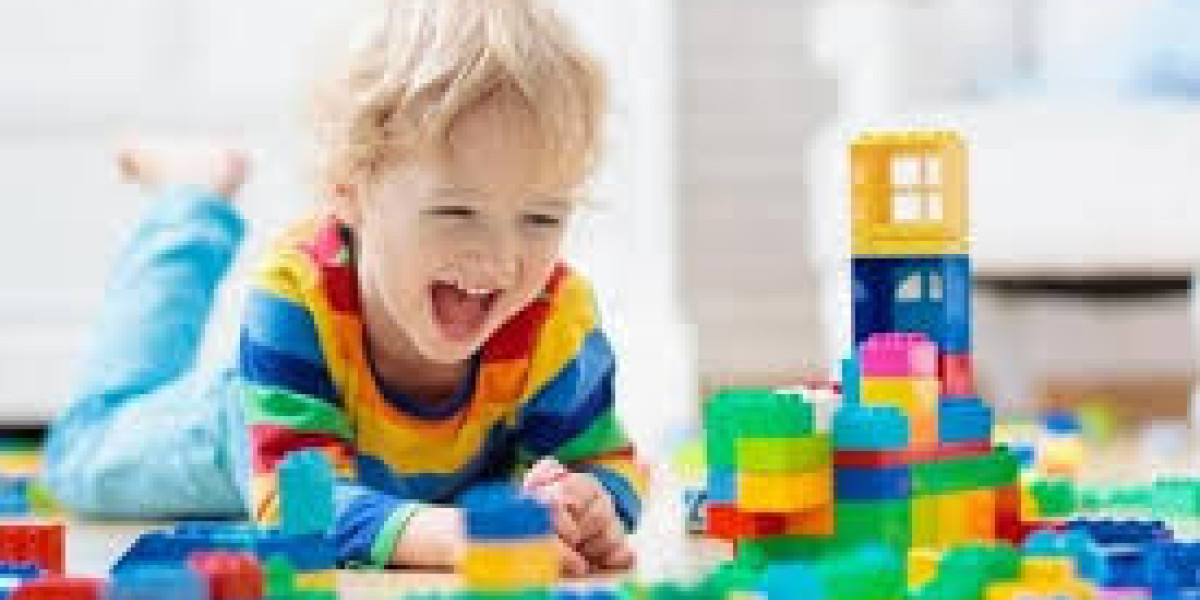Children experience the world through play, movement, learning, and relationships. But when a child has difficulty with daily tasks—such as holding a pencil, dressing themselves, sitting still in class, or interacting with peers—it can affect their confidence and overall development. This is where an Occupational Therapist for Children becomes essential.
Occupational therapy (OT) for children helps support kids in mastering the skills they need for everyday life. Whether your child has developmental delays, sensory issues, motor skill challenges, or a diagnosed condition such as autism or ADHD, a pediatric occupational therapist can provide strategies, tools, and guidance to help them succeed.
In this blog, we’ll explore what a pediatric occupational therapist does, how they help children, what therapy sessions involve, and how families can get started.
What Is an Occupational Therapist for Children?
An Occupational Therapist for Children (also known as a pediatric occupational therapist) is a licensed professional who helps children develop the physical, emotional, social, and cognitive skills needed to perform daily activities. For children, these activities—or “occupations”—include:
Playing with peers
Writing and drawing
Feeding and dressing themselves
Participating in school activities
Regulating emotions and behavior
Unlike physical therapists who primarily focus on movement and mobility, occupational therapists focus on functional skills that allow a child to be independent and engaged in their environment.
What Conditions Can Occupational Therapists for Children Help With?
Many children benefit from occupational therapy, even without a formal diagnosis. However, occupational therapy is often recommended for children with:
Autism Spectrum Disorder (ASD)
Attention Deficit Hyperactivity Disorder (ADHD)
Sensory Processing Disorder (SPD)
Down Syndrome
Cerebral Palsy
Learning Disabilities
Developmental Delays
Traumatic Brain Injury
Fine and Gross Motor Delays
Feeding or Oral Motor Challenges
Pediatric OTs also work with children recovering from injuries or dealing with anxiety, behavioral disorders, or visual-motor integration issues.
Signs Your Child May Need Occupational Therapy
If your child struggles with certain tasks or seems to be falling behind peers in development, you may want to consider consulting an Occupational Therapist for Children. Common signs include:
Fine Motor Skill Difficulties
Trouble using utensils, pencils, or scissors
Difficulty with buttons, zippers, or shoelaces
Poor handwriting or letter formation
Sensory Sensitivities
Overreacts to sounds, textures, or lights
Seeks out intense movement or avoids touch
Gets overwhelmed in noisy or busy environments
Gross Motor Coordination Issues
Appears clumsy or uncoordinated
Difficulty with balance or catching a ball
Tires quickly during physical activity
Emotional or Behavioral Challenges
Difficulty managing frustration or transitions
Frequent meltdowns or outbursts
Trouble focusing or sitting still
Delays in Daily Life Skills
Struggles with brushing teeth, getting dressed, or feeding themselves
Avoids new tasks or routines
Lacks confidence in age-appropriate responsibilities
If these issues are affecting your child’s ability to participate in school, at home, or in social situations, pediatric occupational therapy could be a key support.
What Happens During Occupational Therapy for Children?
Initial Evaluation
The therapy process starts with a detailed assessment. The occupational therapist evaluates:
Motor skills (fine and gross)
Sensory processing abilities
Visual-motor integration
Attention and emotional regulation
Self-care and functional independence
The therapist also interviews parents and teachers, when applicable, to understand the child’s challenges in different environments.
Custom Treatment Plan
Based on the assessment, the therapist develops an individualized plan with goals such as:
Improving fine motor coordination
Increasing independence in dressing or feeding
Enhancing focus and attention
Managing sensory sensitivities
Strengthening emotional regulation skills
Therapy Sessions
Therapy is typically once or twice per week, lasting 30 to 60 minutes. Each session is tailored to the child’s age, needs, and interests.
Common OT activities include:
Sensory play: Using textured materials, swings, or fidgets to improve sensory processing
Fine motor tasks: Beading, puzzles, pegboards, or crafts to enhance hand skills
Handwriting support: Practicing letters, grip, and posture
Self-care routines: Simulating dressing, brushing, or eating activities
Emotional regulation strategies: Learning deep breathing, visual schedules, or social stories
Gross motor exercises: Balance beams, ball play, or obstacle courses
Sessions are often play-based to keep the child engaged and motivated while building functional skills.
Benefits of Occupational Therapy for Children
✅ Greater Independence
Children learn how to manage daily tasks without constant help, boosting confidence and self-esteem.
✅ Improved Academic Skills
Better handwriting, focus, and coordination lead to stronger classroom participation and academic performance.
✅ Stronger Motor Skills
OT improves hand-eye coordination, fine motor control, and gross motor movement.
✅ Better Sensory Processing
Children learn how to regulate their responses to sound, touch, and movement, reducing stress and meltdowns.
✅ Enhanced Emotional and Social Skills
Occupational therapists teach strategies to manage emotions, build friendships, and adapt to new environments.
Where Do Pediatric Occupational Therapists Work?
Occupational therapists for children work in various settings, including:
Private Therapy Clinics – One-on-one outpatient sessions
Schools – As part of special education services under an IEP or 504 Plan
Hospitals – For children recovering from injury or illness
In-Home Services – Especially for early intervention (birth to age 3)
Teletherapy – Virtual sessions for remote access or convenience
The setting depends on the child’s needs, insurance coverage, and available services in your area.
How to Choose the Right Occupational Therapist for Your Child
Look for:
Proper Licensing (OTR or COTA with pediatric experience)
Positive Reviews or Recommendations
Parent Involvement in Therapy
Experience with Your Child’s Specific Needs
A Friendly, Child-Centered Environment
You can get referrals from your child’s pediatrician, teacher, or another parent. Many clinics offer a free consultation or evaluation to help you get started.
Final Thoughts
An ' is more than a healthcare provider—they’re a developmental partner who helps your child thrive. Pediatric occupational therapy empowers children to navigate their world with confidence, independence, and joy.






